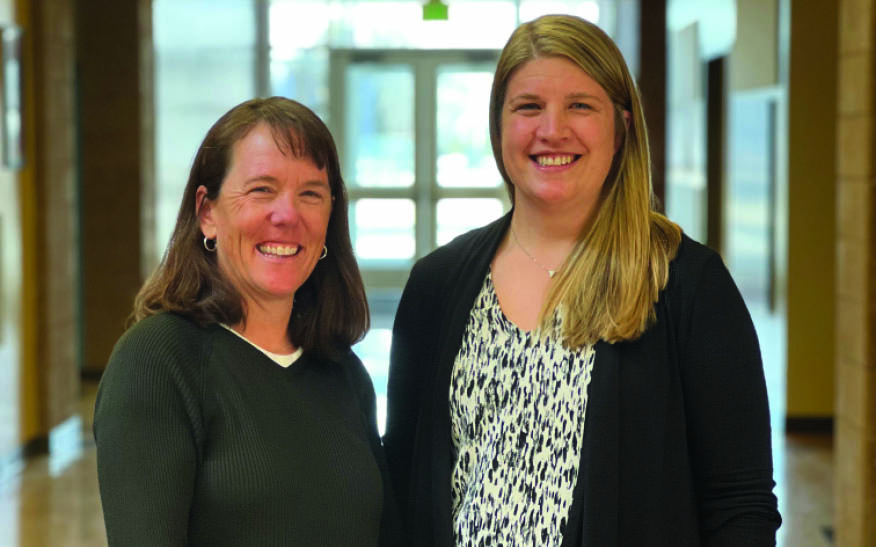Finding Our Lanes

As I walked down the hall headed to lunch duty on a cold November day, I heard a call come through on my radio. Ms. Griffin had sent Enzo to her buddy teacher to reflect on his disruptive behavior in language arts class, and he had wandered off and never arrived. Ms. Griffin was worried and didn’t know where Enzo went. I knew to head straight to the counseling office to find him. Sure enough, he sat in our school counselor’s office in tears, shaking with anger. I made eye contact with Mrs. Solar, one of our school counselors, and the shared glance told me that there was more to the story. This was not just defiance. It was a mixture of a behavior incident and a mental health crisis. In that moment, Mrs. Solar and I silently communicated that this situation wasn’t just in her lane. It wasn’t just in my lane. It was in both of our lanes. So, what next?
I believe that it is impossible to truly build a positive school culture and cultivate a supportive learning environment for students without a trusting and collaborative relationship between the principal and the school counselor. To me, reimagining the principal-counselor relationship is about defining our “lanes” and identifying how student support most often lives in the overlapping area of both our roles. The discipline situation with Enzo was just one example of how this overlap plays out every day in our schools.

Navigating these overlapping roles requires building a foundation of trust, transparency, and authenticity. I came face to face with this challenge when I recently moved into the principalship of a middle school and had the opportunity to reflect on how to quickly and intentionally build trust with the school counseling team to foster a positive school culture.
In my 10 years as a school leader, I have come to deeply value the relationship between an administrator and a school counselor. However, research shows that many principals see the school counselor role as reactionary and administrative. This undermines the power a school counselor has in supporting students and a supportive learning environment. In fact, researchers have found that a principal underestimating the potential of a school counselor can “sell students short in the end” and that the “challenge here may be the need for school principals and counselors to redevelop, redefine, reimage their relationship.”
For school leaders, spring is naturally a time to reflect on the end of the school year. As you look toward next year, consider the following steps for leveraging a strong administrator-counselor relationship to cultivate a positive school culture.
- Define your lanes and appreciate each other. The first step in building trust and transparency is to start an open dialogue about the roles and responsibilities of both administrators and school counselors. Calling them “lanes” helps to avoid the temptation for the conversation to be task-driven (conferences, course requests, schedules, etc.) or personalized as to what each person can or can’t do. Instead, challenge your team to tackle the more nuanced aspects of student support in a way that values and appreciates the roles and the people in those roles. Ask the hard questions. For example:
- How do we know when a student issue requires peer mediation versus a “no-contact contract” (a mutual agreement between two students who promise not to have direct contact with each other)? Who is involved in that decision?
- How do we know when attendance and engagement issues are a mental health concern, a discipline concern, or both? How do we navigate that conversation with teachers?
- How do we approach situations of teacher-student conflict? What is the role of the counselor and the administrator in these types of situations? Who engages the parents?
This type of dialogue best happens over the summer when you can get the space and time to truly dig into all the aspects of the roles. This is also a fantastic time to build in an opportunity to explore the strengths of everyone on the team and to appreciate their different skill sets.
- Build systems based on these lanes. Once everyone knows their “lane” and the dialogue is open and reflective, build systems and processes that have these lanes as a foundation. It is important to think about the structure of the administrator-counselor touchpoints throughout the week. These collaborative opportunities need to be both formal and informal. Some questions to reflect on include:
- What planned meetings do we have each week to discuss topics in our separate lanes and our overlapping lanes? How do these planned meetings fit within a larger leadership structure (e.g., building leadership team meetings, grade-level meetings, vertical articulation meetings, safety team meetings, administration meetings, etc.)?
- What informal and unplanned interactions do we have each week to be sure we are connecting and building trust?
- How do we best leverage these formal and informal collaborative efforts to support students in crisis or amidst behavioral challenges?
- Share the lanes with teachers and staff. It is important that teachers and staff in the building have the opportunity to observe open and transparent conversations about the administrator and counselor lanes. The best way to do this is to acknowledge the different “lanes” directly with staff, and then display the trusting relationship over time through actions. Demonstrating the administrator-counselor relationship is the most effective way for teachers and staff to see the development of the trusting relationship. This will build staff confidence in the concept that both counselors and administrators are working together to support students and a supportive learning environment. When teachers see this mutual trust and collaboration, they know that their school is a place where student support is paramount.
- Revisit the lanes often to grow together. The key to maintaining a trusting relationship is to be open to constantly revisiting roles and responsibilities. When we continually keep an open dialogue, we can continue to grow as colleagues and as a team. The conversation of “who does what” is destigmatized and transformed into an authentic conversation about what is best for students, teachers, and our shared vision for our school.
It is only through a trusting, transparent, and authentic relationship that we can best support our students and our learning environment. Enzo was having a hard time because he needed both support and accountability. He was communicating his struggles through his behavior. Because Heather Solar and I had done the work ahead of time to define our lanes and build trust, we were able to work together to deliver the support and guidance necessary for a student in crisis at a critical moment.
We both talked with Enzo about his feelings of anger and anxiety and helped him reflect on the impact his actions had on others; I facilitated a restorative discipline conversation between Enzo and his teacher, Ms. Griffin, to identify how Enzo could meet behavior expectations in the classroom; and Mrs. Solar set up regular check-ins with Enzo to build his skill set in recognizing the antecedent for his anger and anxiety. As school leaders, it is critical that we reflect on how to develop clear roles and responsibilities or lanes, build systems based on those lanes, and share those systems with teachers and staff so we can all reach our full potential.
Andrea Smith, EdD, is the principal of Erie Middle School in Erie, CO. She and Heather Solar will present a session on trust in leadership and schools at Ignite 2023 in July.
To register for Ignite 2023, visit ignite.nassp.org.
Reference
Lewis, T., Jones, K. D., Militello, M., & Meisenhelder, R. (2022). A clear and consistent focus on students: Principals’ perceptions of the role of school counselors. Journal of School Leadership, 32 (1), 3–26. doi.org/10.1177/1052684620972067
